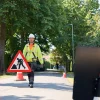Broadband Forum Begin Certifying Gigabit Speed G.fast at 212MHz
The Broadband Forum has today announced that the first five G.fast devices running at 212MHz have successfully completed their certification program, which tested the kit at speeds of up to 1.45Gbps and copper line distances of up to 400 metres from the distribution point (cabinet/remote node etc.).
At present most of the G.fast (ITU G.9700/9701) hardware that has been deployed in the wild by telecoms operators (e.g. Openreach in the UK) tends to only make use of up to 106MHz of spectrum frequency, which works best at up to around 200-300 metres from a distribution point (beyond that the signal degradation rapidly kills performance).
However the technology has always had the potential to harness 212MHz of spectrum and a few years ago this was formally adopted into the standard via an ITU-T amendment (no.3). Sadly adopting 212MHz isn’t so much about improving G.fast’s limited reach as it is about boosting speeds to faster than Gigabit levels of performance on the shortest of copper lines.
Advertisement
Back in 2017 Openreach tested a Fibre-to-the-distribution-point (FTTdp) based G.fast setup that hit 1.66Gbps aggregate at the distance of 40 metres using 212MHz (here). In theory this approach could deliver an aggregate speed of around 1Gbps when installed up to 150 metres from a property.
Geoff Burke, Chief Marketing Officer at Broadband Forum, said:
“Delivering higher performance and gigabit speeds over a wider range of deployment scenarios, 212 MHz Gfast holds huge potential for operators. Demonstrating interoperability through Broadband Forum’s certification program gives operators confidence that the technology can be delivered at scale, reducing test time and accelerating mass deployment.”
Lincoln Lavoie, Senior Engineer at UNH-IOL, added:
“Operators are well-versed in the benefits of Gfast which enables ultra-fast speeds to the underserved Multi Dwelling Unit (MDU) market and is a powerful complement to fiber network buildouts. The advent of 212 MHz Gfast takes these services over copper to another level, aligning the copper service offerings with those of full fiber and further simplifying the operations of broadband networks.
This new certification program will help operators deploy this new groundbreaking technology quickly and more cost-effectively.”
Apparently the first hardware to pass through the forum’s new certification program, which is supported by the University of New Hampshire InterOperability Laboratory (UNH-IOL), comes from manufacturers including ADTRAN, Intel, NetComm and Nokia. More kit is expected to be approved as the year progresses.
In the UK all of this is fast becoming irrelevant. The local market has somewhat altered course over the past two years to focus on Fibre-to-the-Premises (FTTP) style deployments, which are more expensive and slower to build but offer significant advantages in terms of potential future speeds, maintenance and reliability.
Openreach has similarly scaled back their own G.fast deployment plan from 10 million to c.5.7 million premises by the end of 2020 (done so they can focus on bringing FTTP to 3 million premises by the end of 2020) and take-up of the new hybrid fibre technology is still very low (here). Admittedly the roll-out hasn’t been going for very long and ISPs aren’t putting much effort into marketing it.
Advertisement
Suffice to say that it remains to be seen whether Openreach will ever adopt 212MHz into their network, particularly with the focus now shifting so dramatically toward “full fibre” deployments. We did ask and will update if a response arrives.
Mark is a professional technology writer, IT consultant and computer engineer from Dorset (England), he also founded ISPreview in 1999 and enjoys analysing the latest telecoms and broadband developments. Find me on X (Twitter), Mastodon, Facebook, BlueSky, Threads.net and Linkedin.
« ISP Hyperoptic Brings 1Gbps Broadband to 32 Y&Y Residential Blocks


















































Comments are closed